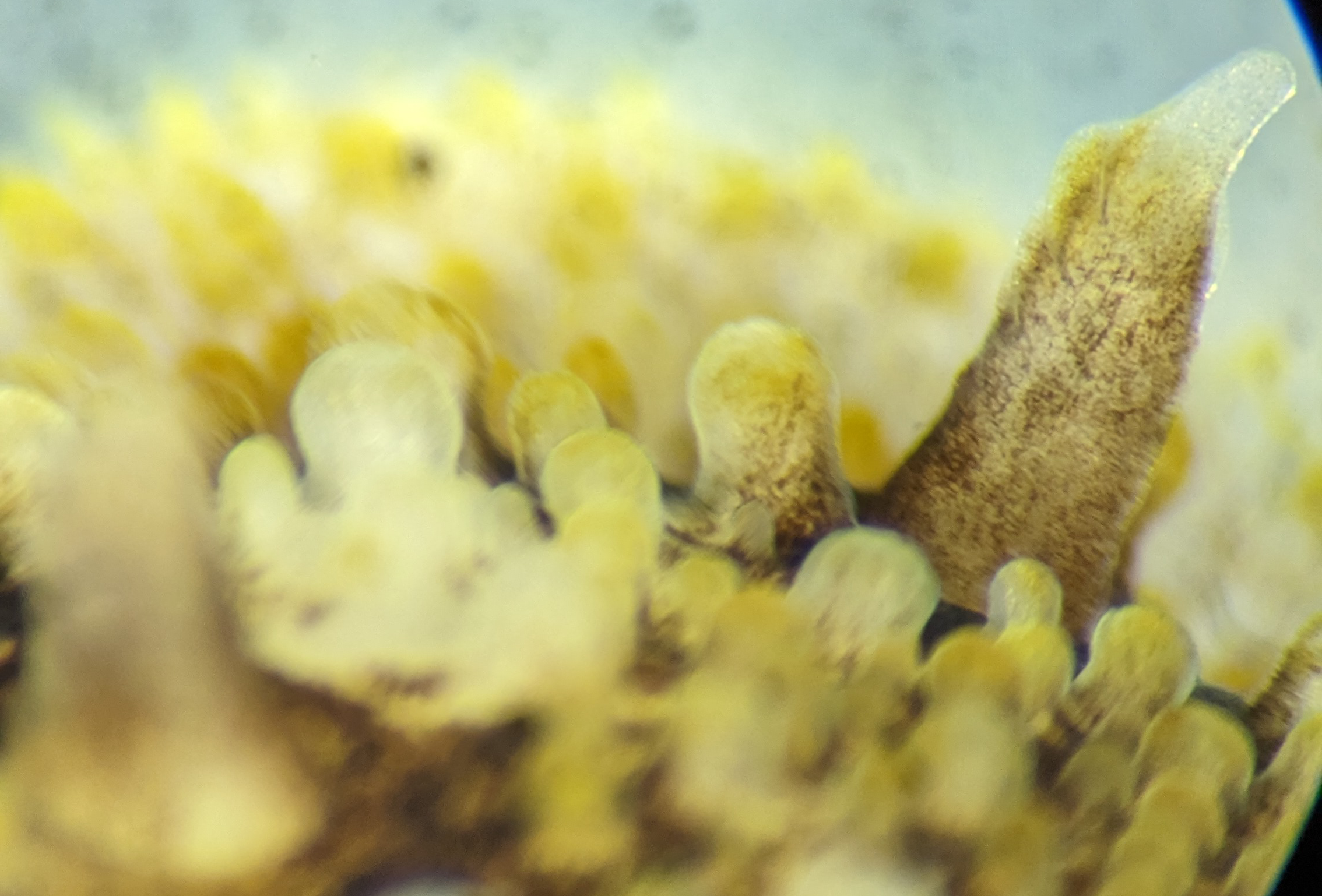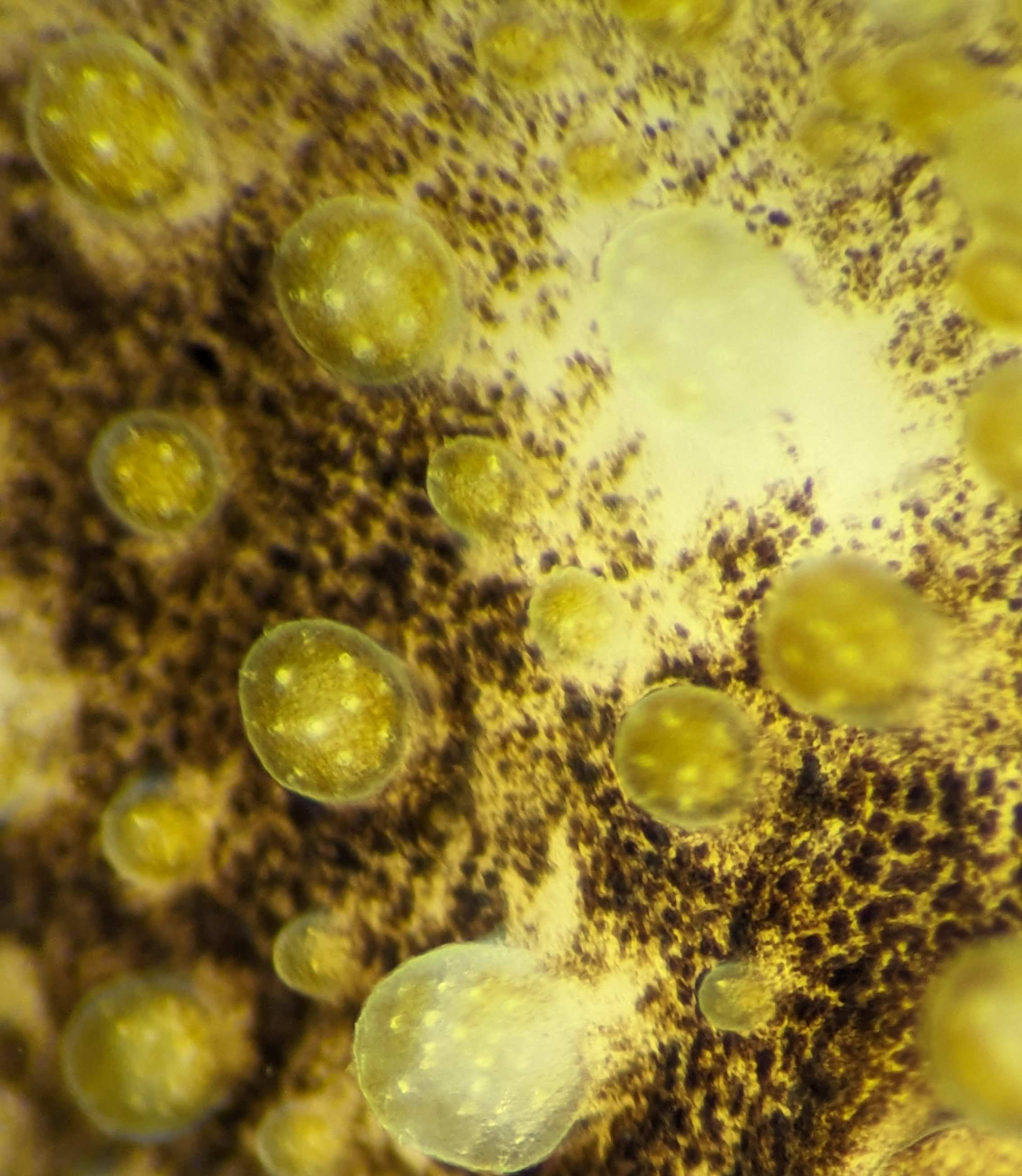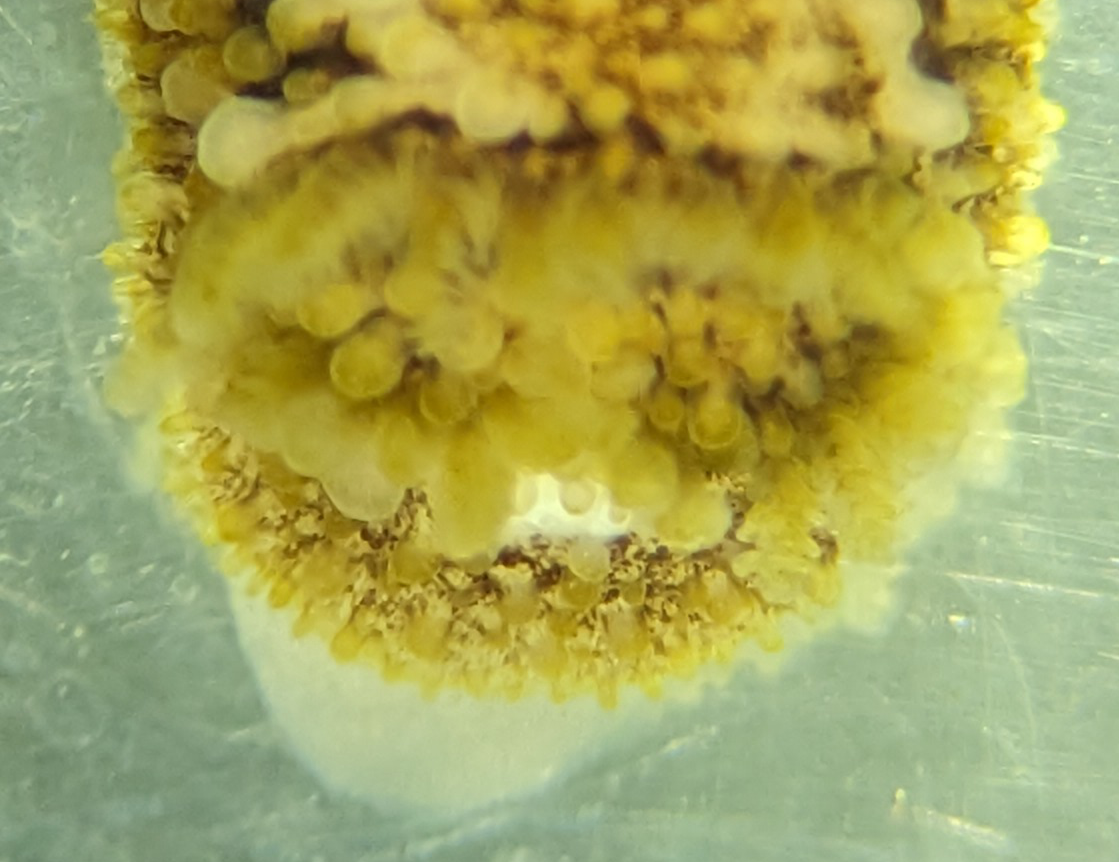Description: This dorid nudibranch has no large outgrowths on the dorsum except for the gills and rhinophores, along with smaller rounded tubercles. The rhinophores are perfoliate, at least 4x as long as their width at the base, and taper gradually toward the tip (photo). The dorsum is firm, pale off-white with brown blotches or bands (sometimes all brown or pale orangeor rarely white), but does not have yellow on the tubercles, rhinophores, gills, or edge of the foot. The dorsum has many rounded, club or mushroom-shaped tubercles with projecting spicules. A large, white tubercle is often present just anterior to the anus. The 16-32 gills, which arise from separate pits and cannot be retracted into sheaths, are pinnate and form two distinctive semicircles (almost like a figure 8 or capital B that is fallen face-down) around the anus (photo). The tail has no mid-dorsal ridge. Length to 2.5 cm in the Pacific Northwest but to 4 cm in the North Atlantic.
How to Distinguish from Similar Species:Acanthodoris brunnea has 5-7 bipinnate gills which form a circle around the anus. Its dorsal tubercles are nearly conical instead of rounded, and have few if any projecting spicules. Its color is pale brown with black blotches between the spicules and yellow on the gill tips, tubercles, and rhinophores, and often around the margin of the foot.
Geographical Range: Arctic ocean, North Atlantic ocean, North Pacific ocean. In eastern Pacific, Alaska to Baja California. Very common around Juneau, Alaska.
Depth Range: Intertidal, or can be found down to 30 m depth. Subtidal populations can be dense.
Habitat: Rocky intertidal with barnacles.
Biology/Natural History: The adults of this specialist species feed on acorn barnacles such as Balanus glandula, Balanus crenatus, and Semibalanus cariosus, while the juveniles feed on bryozoans. Reproduces mainly in winter and lays its pale orange or cream-colored eggs in ribbons. The larvae are stimulated to settle when they encounter rocks with barnacles on them.
My thanks to Karin Fletcher of the Pacific Northwest Shell Club, who
helped me in the identification of this oddly-colored individual. Published
descriptions state that they normally do not have yellow on them. Apparently
the distinctive shape of the tubercles
with spicules,
plus the unusual arrangement of the gills around the anus clearly identify
this species as O. bilamellata even though its color is unusual.
| Return to: | |||
| Main Page | Alphabetic Index | Systematic Index | Glossary |
References:
Dichotomous Keys:Carlton, 2007
Kozloff, 1987, 1996
General References:
Behrens,
1991
Harbo,
2011
Kozloff,
1993
Lamb
and Hanby, 2005
Morris
et al., 1980
O'Clair
and O'Clair, 1998
Scientific Articles:
Web sites:
General Notes and Observations: Locations, abundances, unusual behaviors:
 This
view of the dorsal head shows the tapering, mildly perfoliate
rhinophores
along with the large tubercles
with projecting spicules.
Photo by Carter Nash, June 2023
This
view of the dorsal head shows the tapering, mildly perfoliate
rhinophores
along with the large tubercles
with projecting spicules.
Photo by Carter Nash, June 2023
 This
photo of the dorsum
from above shows the large, swollen tubercles
with lighter-colored projecting spicules.
Photo by Carter Nash, June 2023
This
photo of the dorsum
from above shows the large, swollen tubercles
with lighter-colored projecting spicules.
Photo by Carter Nash, June 2023

This view from the rear of the animal shows the unique, horseshoe or
fallen-B shaped arrangement of the many gills.
Note that this dorsum
does not have a white spot just anterior to the gills
but it does just posterior to them. Photo by Carter Nash, June 2023
Authors and Editors of Page:
Dave Cowles (2023): Created original page
CSS coding for page developed by Jonathan Cowles
Salish Sea Invertebrates web site provided courtesy of Walla
Walla University
